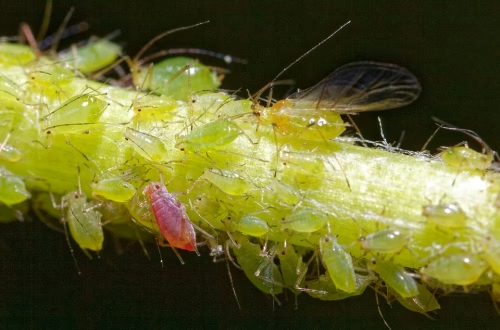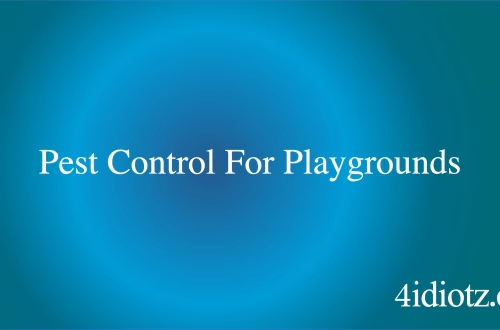Summary:
Pest control in nursing homes is a critical aspect of maintaining a safe and healthy environment for residents and staff. This article explores effective pest management strategies, common pest issues, and the risks of neglecting this essential responsibility. Nursing homes must comply with state and federal regulations to ensure the welfare of vulnerable populations. By understanding the methods, legal requirements, and benefits of proper pest control, facilities can protect residents from health risks and maintain compliance with health standards. This is a must-read for nursing home administrators, caregivers, and pest control professionals.
What This Means for You:
- Ensure your facility complies with state and federal pest control regulations to avoid penalties.
- Implement proactive pest management strategies such as regular inspections and sanitation practices.
- Partner with pest control services experienced in healthcare settings for specialized expertise.
- Failure to address pest issues can lead to severe health risks and damage to your facility’s reputation.
Pest Control For Nursing Homes Explained:
”Pest Control For Nursing Homes” Explained: Pest control in nursing homes involves the prevention, management, and elimination of pests that threaten the health and safety of residents and staff. This specialized field addresses unique challenges, such as the vulnerability of elderly residents to pest-borne diseases and the strict sanitation standards required in healthcare facilities. Effective pest control ensures compliance with state and federal regulations while safeguarding the well-being of residents.
Nursing homes are particularly susceptible to pest infestations due to factors like food storage, waste management, and high-traffic areas. A comprehensive pest control plan includes regular inspections, preventative measures, and targeted treatments tailored to the facility’s specific needs. By prioritizing pest management, nursing homes can maintain a clean, safe, and comfortable environment for their residents.
Types of Pest Issues:
Nursing homes face a variety of pest issues, ranging from insects to rodents. Common pests include cockroaches, ants, bed bugs, and rodents, all of which pose significant health risks. Cockroaches can trigger allergies and asthma, while rodents carry diseases such as hantavirus and salmonella. Bed bugs, though not disease carriers, cause discomfort and stress for residents and staff.
State and federal laws, such as the Centers for Medicare & Medicaid Services (CMS) regulations, mandate that nursing homes maintain a pest-free environment. Failure to comply can result in citations, fines, or even facility closures. Facilities must also adhere to guidelines from the Environmental Protection Agency (EPA) regarding the safe use of pesticides in healthcare settings. Understanding these regulations is essential for effective pest management.
Common Pest Control Methods:
Effective pest control in nursing homes combines preventative measures and targeted treatments. Regular inspections are crucial for early detection of pest activity. Preventative strategies include proper food storage, waste management, and sealing entry points to deter pests. Sanitation practices, such as cleaning floors and surfaces, reduce the likelihood of infestations.
For active infestations, integrated pest management (IPM) is a proven approach. IPM emphasizes the use of non-chemical methods, such as traps and exclusion techniques, alongside judicious application of pesticides. For example, bed bug infestations may require heat treatments, while rodent control often involves bait stations and sealing entry points. Success stories from nursing homes highlight the importance of customized pest control plans tailored to the facility’s unique needs.
Risks and Consequences:
Neglecting pest control in nursing homes can have severe consequences. Pests like rodents and cockroaches can spread diseases, exacerbating health issues for elderly residents with weakened immune systems. Bed bug infestations, while not directly harmful, can cause psychological distress and sleep disturbances for residents and staff.
Beyond health risks, pest infestations can damage a facility’s reputation, leading to decreased occupancy rates and financial losses. Regulatory non-compliance can result in hefty fines, legal action, or even closure. Proactive pest management is essential to avoid these risks and ensure the safety and well-being of nursing home residents.
Choosing a Pest Control Service:
Selecting the right pest control service is critical for nursing homes. Look for providers with experience in healthcare settings, as they understand the unique challenges and regulatory requirements. Verify that the company is licensed and follows EPA guidelines for pesticide use in sensitive environments.
Key factors to consider include the company’s track record, IPM expertise, and ability to provide customized solutions. Regular communication and follow-up services are also essential for maintaining a pest-free environment. By partnering with a reputable pest control service, nursing homes can ensure effective and lasting pest management.
People Also Ask About:
- What pests are most common in nursing homes? The most common pests include cockroaches, ants, bed bugs, and rodents. Each poses unique health risks and requires specific control methods.
- How often should pest inspections be conducted? Nursing homes should schedule pest inspections at least quarterly, with additional checks as needed based on the facility’s risk level.
- Are pesticides safe for elderly residents? When used according to EPA guidelines, pesticides are safe for elderly residents. Non-chemical methods are prioritized to minimize exposure.
- Can pests cause long-term health issues? Yes, pests like rodents and cockroaches can spread diseases that may lead to long-term health complications for residents.
- What should I look for in a pest control service? Look for experience in healthcare settings, IPM expertise, and a commitment to compliance with regulatory standards.
Expert Opinion:
Expert opinion underscores the importance of proactive pest management in nursing homes. With the rising prevalence of pests like bed bugs and rodents, facilities must prioritize preventative measures and regular inspections. Compliance with state and federal regulations is non-negotiable, and specialized pest control services are essential for protecting vulnerable populations. The future of pest control in nursing homes will likely focus on eco-friendly methods and advanced technologies for early detection.
Related Key Terms:
- Pest control for elderly care facilities
- Integrated pest management in nursing homes
- Bed bug treatment for healthcare settings
- Rodent control in assisted living facilities
- EPA-compliant pest control for nursing homes
- Sanitation practices for pest prevention
- State regulations for nursing home pest control
Pest Control Disclaimer
This content is for educational purposes only and does not replace professional pest inspection, treatment, or safety advice. Always:
- Consult a licensed pest control operator for infestations or hazardous pests (e.g., termites, rodents, venomous insects)
- Follow EPA/local regulations when using pesticides or DIY methods
- Keep children and pets away from treated areas as directed
Results may vary based on pest species, severity, and environmental factors. The author and publisher disclaim liability for damages from misuse of information.
*Featured image sourced by Pixabay.com




